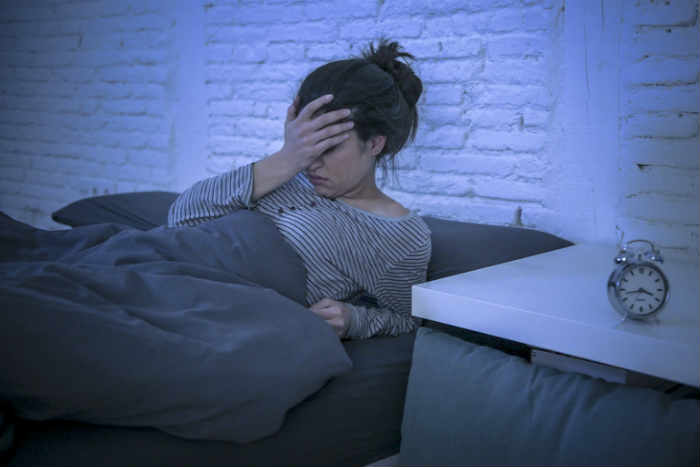


Level IV: evidence obtained from expert committee reports or opinions and/or clinical experiences of respected authorities. It is imperative that clinicians remain alert to these possible individual and societal risks during the evaluation. There is also an increased risk for depression, anxiety, substance -use, suicide, and possible immune dysfunction. Insomnia patients are more likely to visit hospitals and physicians, have increased absenteeism, make errors or have accidents at work, and have more fatal road accidents. Patients with chronic insomnia usually have accompanying daytime impairment of cognition, mood, or performance that impacts not only the patient and his family, but also affects friends, coworkers, and caretakers. Despite these high prevalence rates, evidence suggests that insomnia is mostly under-recognized, under-diagnosed, and under-treated, with the condition continuing to remain persistent in 50–85% of individuals over follow-up intervals of one to several years.Ĭhronic insomnia represents a more complex condition than acute transient insomnia. About 30% of all adults complain of occasional insomnia and 10% of chronic insomnia, of whom 40% may have a psychiatric illness. The prevalence, however, ranges from 10 to 15% among the general population, with higher rates seen among divorced, separated, or widowed people, older ages, female gender, White population, and in the presence of co-morbid medical or psychiatric illness. Various studies have noted insomnia to be quite a common condition with symptoms present in about 33–50% of the adult population. The presenting complaints are often that of difficulties falling asleep in spite of being in bed, waking up often during the night and having trouble going back to sleep, waking up too early in the morning or having an unrefreshing sleep. Being the first psychosomatic disorder to be described by Johann Heinroth in 1818, insomnia clinically presents as a subjective perception of dissatisfaction with the amount and/or quality of the sleep. It is a disorder characterized by inability to sleep or a total lack of sleep. The word "insomnia' originates from the Latin "in" (no) and "somnus" (sleep). However, adequate trials of combined behavior therapy and pharmacotherapy are the best course of management. Among pharmacotherapeutic agents, non-benzodiazepine hypnotics are the first line of management followed by benzodiazepines, amitryptiline and antihistaminics. Non-pharmacologic strategies such as stimulus control therapy and relaxation and cognitive therapies have the best effect sizes followed by sleep restriction, paradoxical intention and sleep hygiene education which have modest to less than modest effect sizes. To initiate treatment, it is necessary to define it and differentiate it from other co-morbid psychiatric disorders. There are several strategies to manage chronic insomnia. A computerized search on PubMed carried from 1980 to January 2009 led to the summarization of the results.

This article aims to review the operational definitions and management of chronic insomnia. Yet this condition is still under-recognized, under-diagnosed, and under-treated. Insomnia is a disorder characterized by inability to sleep or a total lack of sleep, prevalence of which ranges from 10 to 15% among the general population with increased rates seen among older ages, female gender, White population and presence of medical or psychiatric illness.


 0 kommentar(er)
0 kommentar(er)
